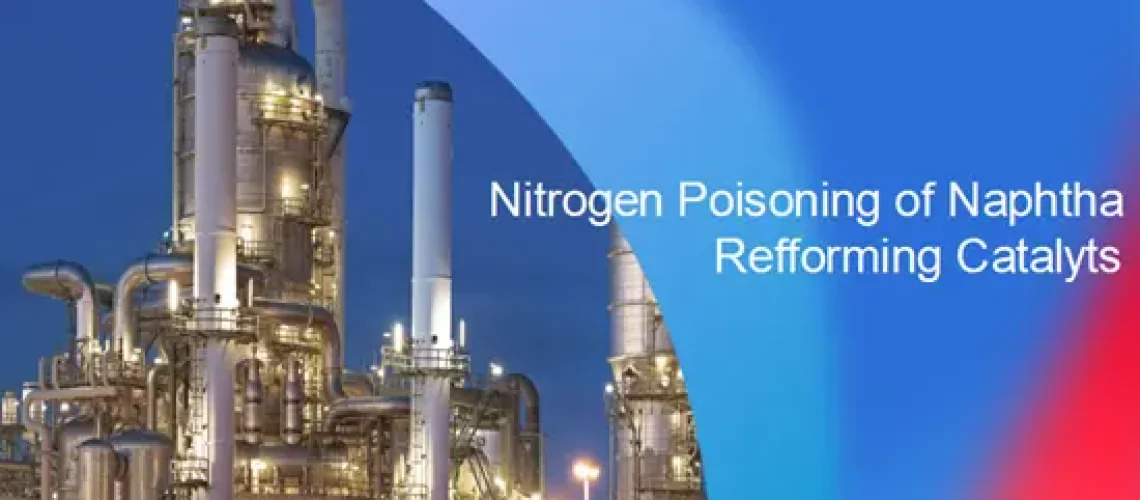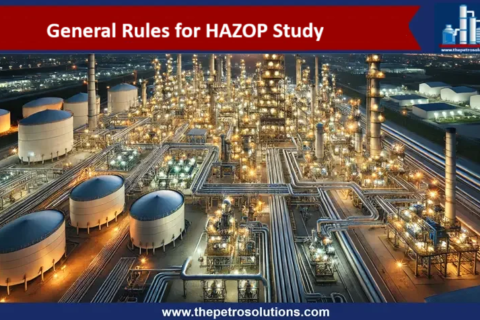Nitrogen is a temporary acid function poison of naphtha reforming Platinum catalyst. Reformer feed nitrogen is normally controlled at 0.1~0.5 wppm and is less frequently present in the reforming feed. The overall effect of Nitrogen poisoning is the reduction of catalyst chloride level. Failure to replenish this lost chloride will reduce the acidic function of the catalyst and result in decreased catalyst activity.
In the reforming unit organic nitrogen is converted to Ammonia in the presence of hydrogen on the reforming catalyst. Ammonia (NH3) reacts with Chloride and produces ammonium chloride (NH4Cl) and ammonium bisulfide (NH4HS), thus reducing the catalyst chloride level.
In the cold product separation section of the unit ammonium chloride (NH4Cl) and ammonium bisulfide (NH4HS) deposit and become solid below 80°C. The resulting salt deposition can foul downstream coolers, separators, recycle gas compressor, export gas compressor valves, and cold trays in the stabilizer creating mechanical problems.
For a 25000 BPD reformer, 0.5 ppm weight of organic nitrogen in the feed can lead to approximately 2 Tons per year of NH4Cl deposition. Ammonium chloride deposits also raise the risk for under-deposit corrosion with trace moisture present.
Effects of Nitrogen Poisoning
- Loss of acidic catalyst activity due to depleting chlorides
- Loss of acidic isomerization functionality.
- Slight increase in hydrogen and C5+ production.
- Increase in differential temperatures across the reactors
- Decrease in reformate Octane
- Drop Recycle gas HCl partial pressure
Control Measures of Nitrogen Poisoning
Organic nitrogen removal is achieved by NHT pretreating of the feed; however, nitrogen removal
is more difficult than sulfur removal and often requires the use of a Ni-Mo catalyst operating at higher hydrogen partial pressure than a typical NHT with Co-Mo catalyst. Naphtha with high nitrogen content requires the NHT unit specifically designed for high nitrogen feed.
When nitrogen contamination is detected in the reformer;
- Avoid increasing the reformer reactor temperature to compensate for lost catalyst chloride and the drop in reformate octane number as this will only increase the loss of chlorine.
- Take the necessary actions in the NHT to lower the nitrogen content to the acceptable level of 0.5 ppm weight.
- Determine the sources of higher nitrogen and address them as soon as feasible.
- Acidic isomerization functionality can be recovered by adding more organic chloride to compensate for the losses.
- Product separation systems and equipment that are fouled usually require cleaning if productivity losses become uneconomical for continuous catalytic reforming operations.
- Upset conditions in the naphtha hydrotreater lead to increases in reformer feed nitrogen. So, monitor and control the desired conditions of the NHT unit.
- Processing heavy feeds with high boiling point can contain high amounts of Nitrogen.
- Increase naphtha hydrotreater temperature to increase dehydronitrogenation activity.
Top References
- Springer Handbook of Petroleum Technology edited by Hsu and Robinson
- Catalytic Naphtha Reforming Process by Soni O. Oyekan
Certified Functional Safety Professional (FSP, TÜV SÜD), Certified HAZOP & PHA Leader, LOPA Practitioner, and Specialist in SIL Verification & Functional Safety Lifecycle, with 18 years of professional experience in Plant Operations and Process Safety across Petroleum Refining and Fertilizer Complexes.
- Nasir Hussainhttps://thepetrosolutions.com/author/admin/
- Nasir Hussainhttps://thepetrosolutions.com/author/admin/
- Nasir Hussainhttps://thepetrosolutions.com/author/admin/
- Nasir Hussainhttps://thepetrosolutions.com/author/admin/






